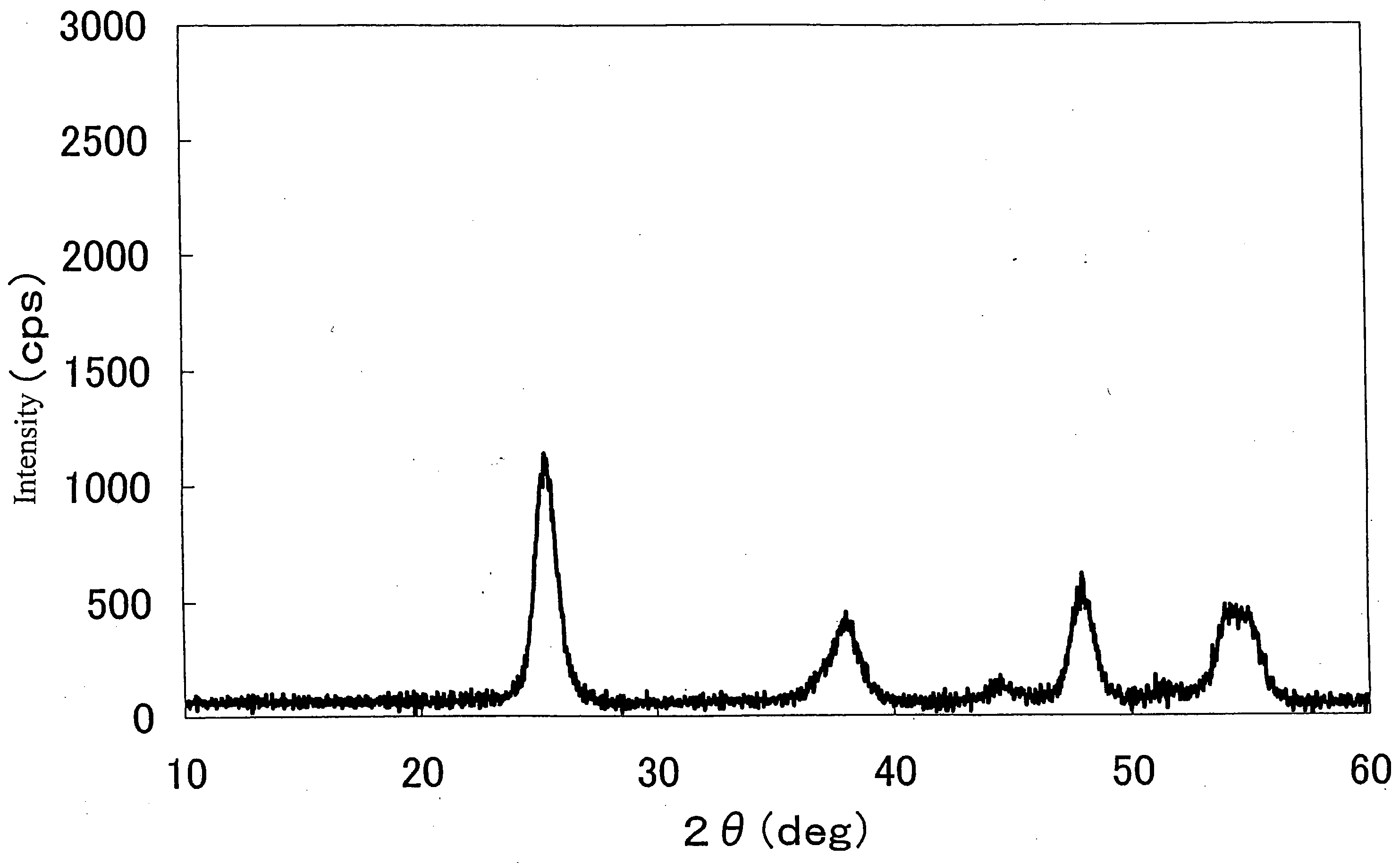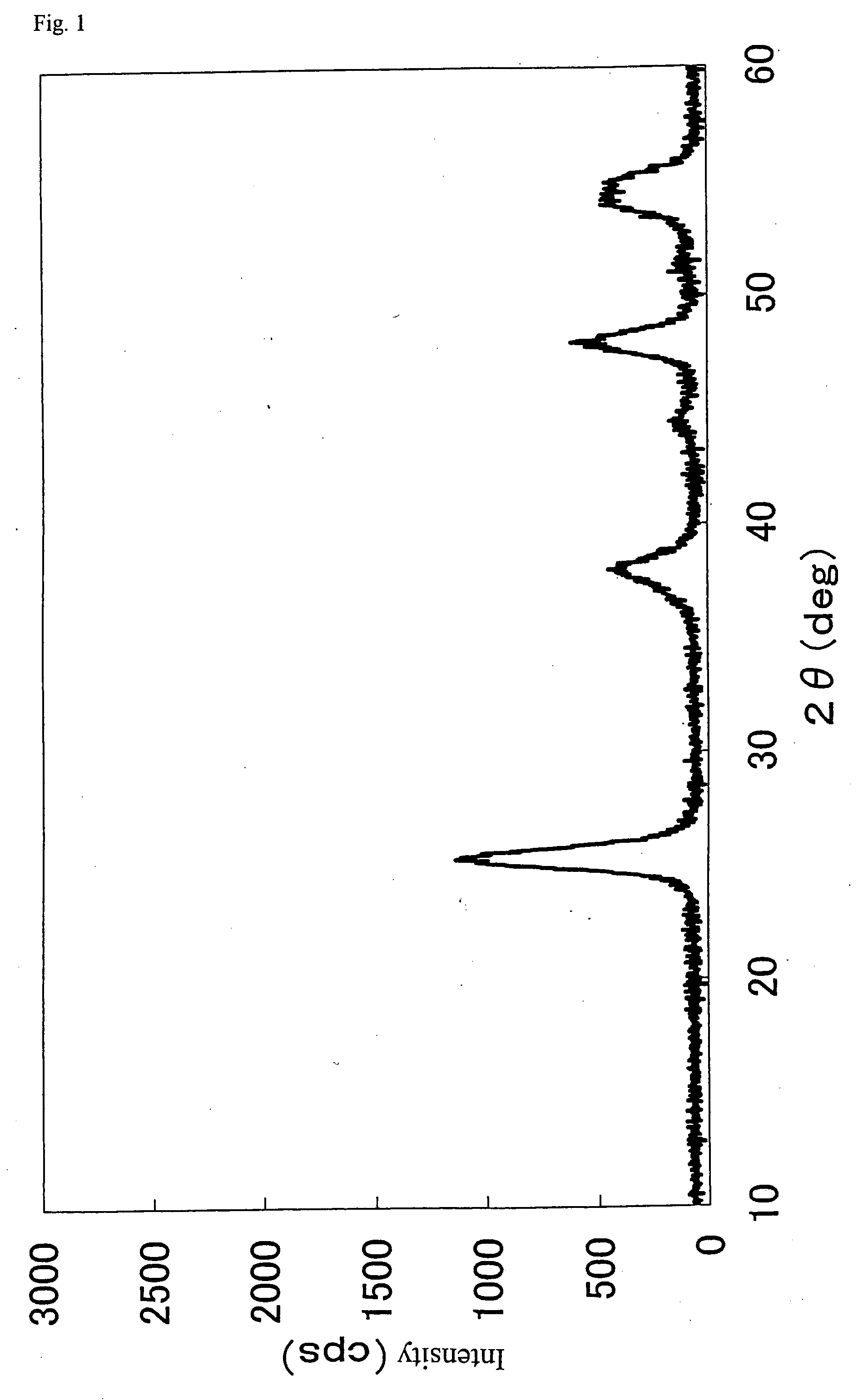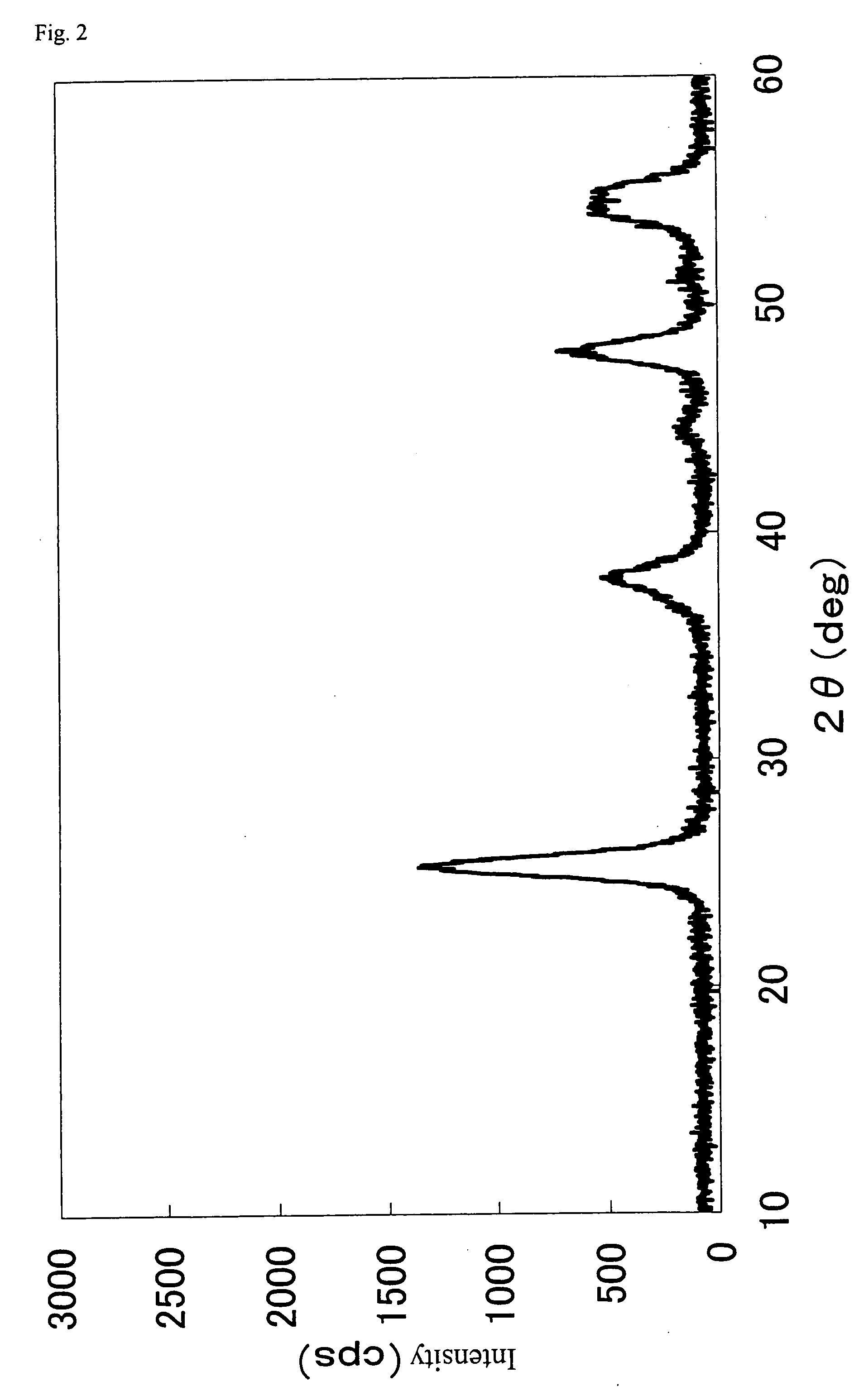Method for treating exhaust gas
a technology for treating exhaust gas and exhaust gas, which is applied in the manufacture of electrode systems, electric discharge tubes/lamps, and separation processes, etc., can solve the problems of difficult mercury removal, substantial cost of active carbon, and the disposal of used active carbon
- Summary
- Abstract
- Description
- Claims
- Application Information
AI Technical Summary
Benefits of technology
Problems solved by technology
Method used
Image
Examples
production example 1-1
Production of Ti—V-Containing Catalyst (1)
[0117] First, a Ti—Si—Mo composite oxide was prepared as follows: To a mixed solution of 6.7 kg of a silica sol (“SNOWTEX-30” manufactured by Nissan Chemical Industries, Ltd., containing 30 wt % in terms of SiO2), 103 kg of industrial aqueous ammonia (containing 25 wt % NH3), and 58 liter of water was added 2.25 kg of molybdic acid, and the mixture was stirred well to prepare a uniform solution. To this solution was gradually added 228 liter of a solution of titanyl sulfate in sulfuric acid (manufactured by Tayca Corporation: containing 70 g / liter as TiO2, 287 g / liter as H2SO4) dropwise while stirring, to produce precipitates, and an appropriate amount of aqueous ammonia was added to adjust a pH to 4. This coprecipitated slurry was allowed to stand for about 40 hours, filtered, sufficiently washed with water, and dried at 150° C. for 1 hour. Further, this was calcined at 500° C. for 5 hours under air atmosphere to obtain a Ti—Si—Mo composit...
production example 1-2
Production of Ti—V-Containing Catalyst (2)
[0121] First, a Ti—Mo composite oxide was prepared as follows: 1.6 kg of molybdic acid was added to a mixed solution of 120 kg of industrial aqueous ammonia (containing 25 wt % NH3) and 140 liter of water, and the mixture was stirred well to completely dissolve molybdic acid, to prepare a uniform solution. To this solution was gradually added dropwise 266 liter of a solution of titanyl sulfate in sulfuric acid (manufactured by Tayca Corporation: 70 g / liter as TiO2, 287 g / liter as H2SO4), to produce precipitates, and an appropriate amount of aqueous ammonia was added to adjust a pH to 4. This coprecipitated slurry was allowed to stand for about 40 hours, filtered, washed sufficiently with water and dried at 150° C. for 1 hour. Further, this was calcined at 500° C. for 5 hours under air atmosphere to obtain a Ti—Mo composite oxide powder. A composition of the Ti—Mo composite oxide powder was titanium oxide:molybdenum oxide=93:7 as expressed b...
production example 1-3
Production of Ti—V-Containing Catalyst (3)
[0125] First, a Ti—Si-composite oxide was prepared as follows: 10 kg of a silica sol (“SNOWTEX-30” manufactured by Nissan Chemical Industries, Ltd.; containing 30 wt % in terms of SiO2), 104 kg of industrial aqueous ammonia (containing 25 wt % NH3) and 73 liter of water were mixed, to prepare a uniform solution. To this solution was gradually added 243 liter of a solution of titanyl sulfate in sulfuric acid (manufactured by Tayca Corporation: containing 70 g / liter as TiO2, 287 g / liter as H2SO4) dropwise while stirring. The resulting slurry was allowed to stand for 20 hours, filtered, washed sufficiency with water and dried at 150° C. for 1 hour. Further, this was calcined at 550° C. for 5 hours under air atmosphere to obtain a Ti—Si composite oxide powder. A composition of the Ti—Si-composite oxide powder was titanium oxide:silicon oxide=85:15 as expressed by a weight ratio in terms of oxide.
PUM
| Property | Measurement | Unit |
|---|---|---|
| Temperature | aaaaa | aaaaa |
| Specific volume | aaaaa | aaaaa |
| Volume | aaaaa | aaaaa |
Abstract
Description
Claims
Application Information
 Login to View More
Login to View More - R&D
- Intellectual Property
- Life Sciences
- Materials
- Tech Scout
- Unparalleled Data Quality
- Higher Quality Content
- 60% Fewer Hallucinations
Browse by: Latest US Patents, China's latest patents, Technical Efficacy Thesaurus, Application Domain, Technology Topic, Popular Technical Reports.
© 2025 PatSnap. All rights reserved.Legal|Privacy policy|Modern Slavery Act Transparency Statement|Sitemap|About US| Contact US: help@patsnap.com



